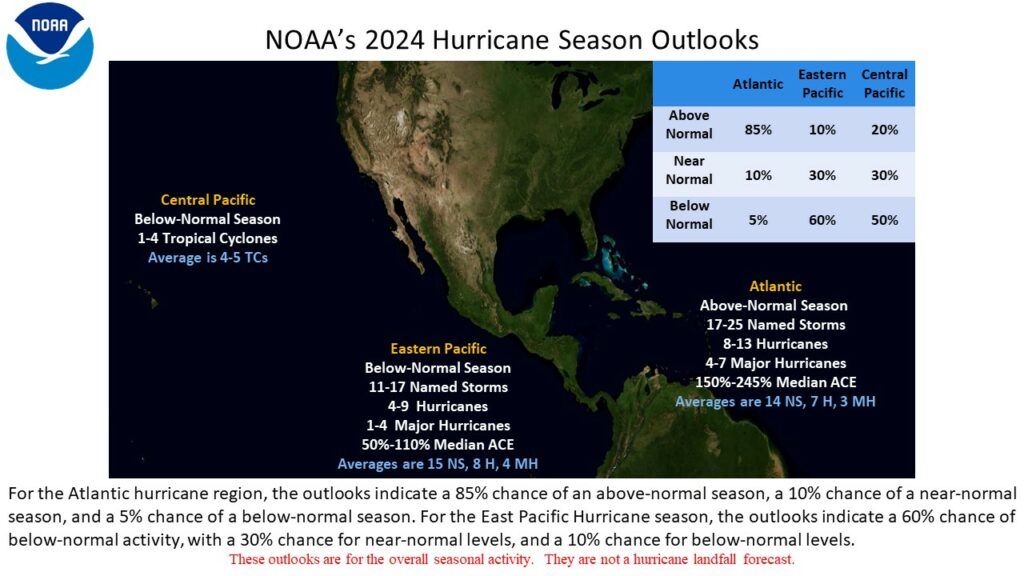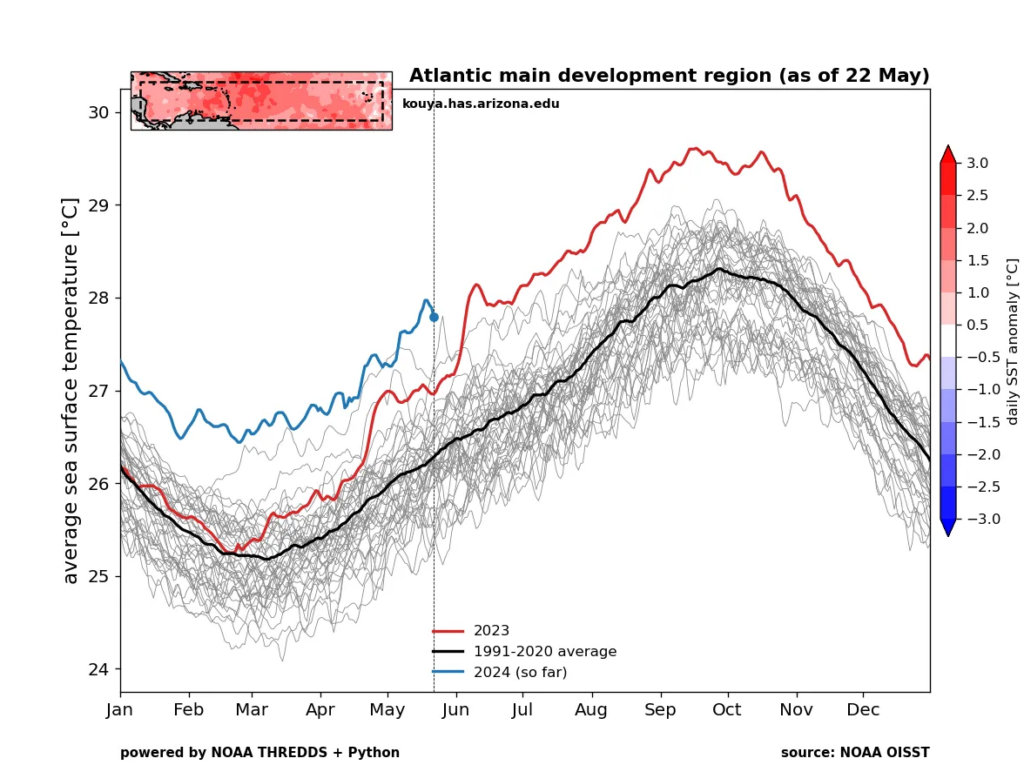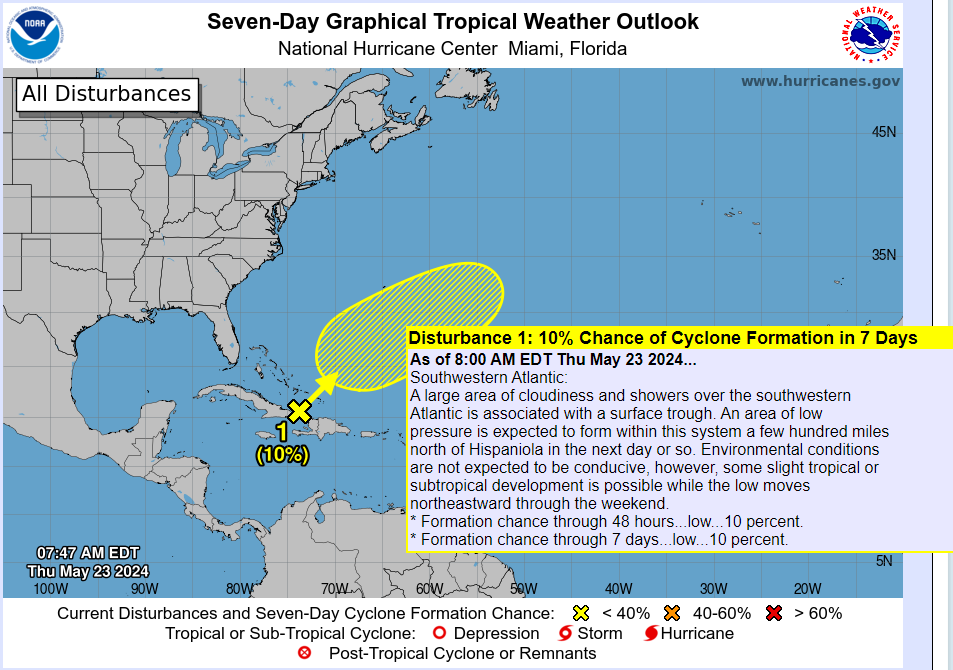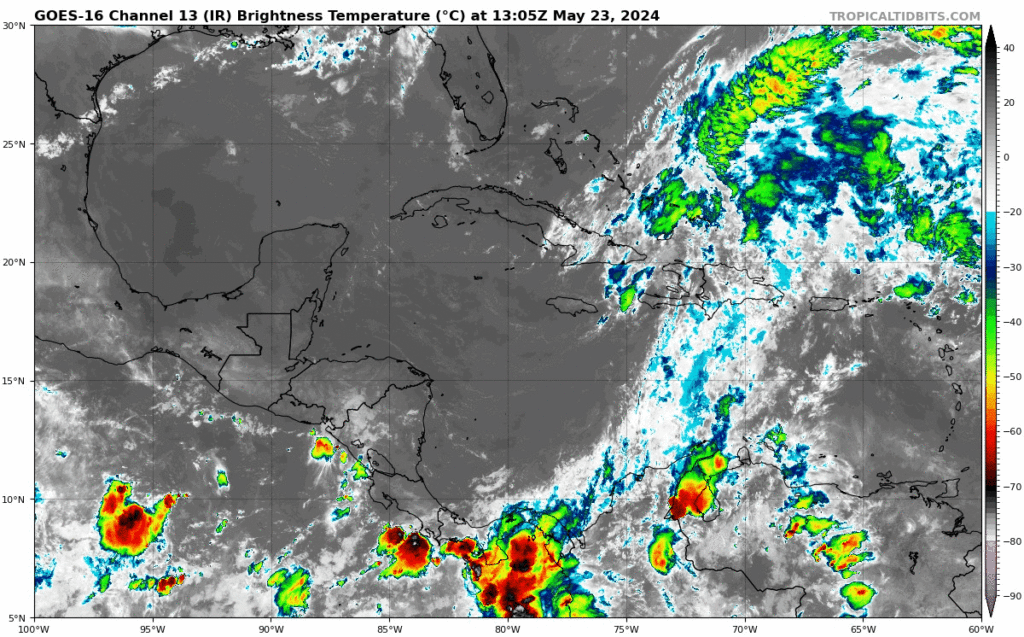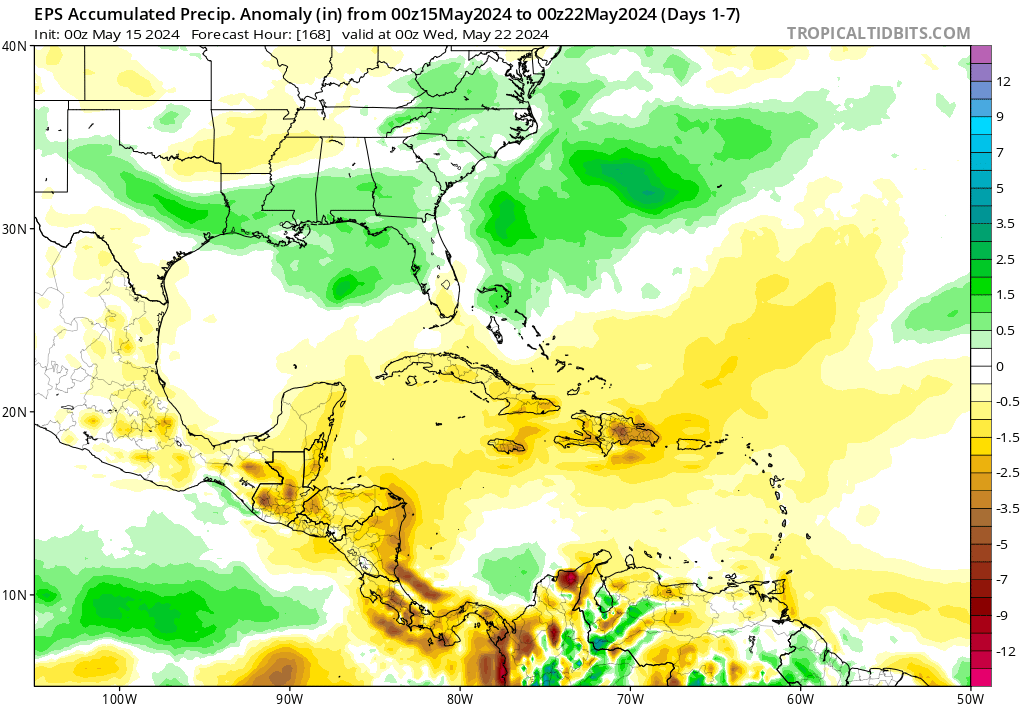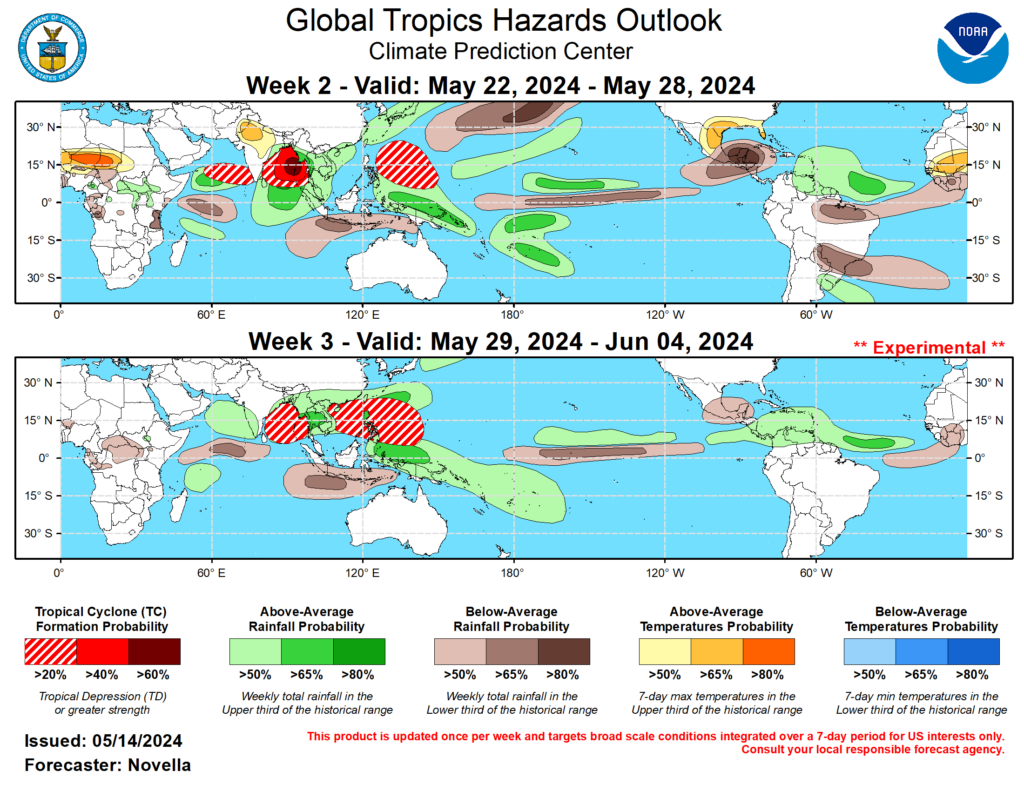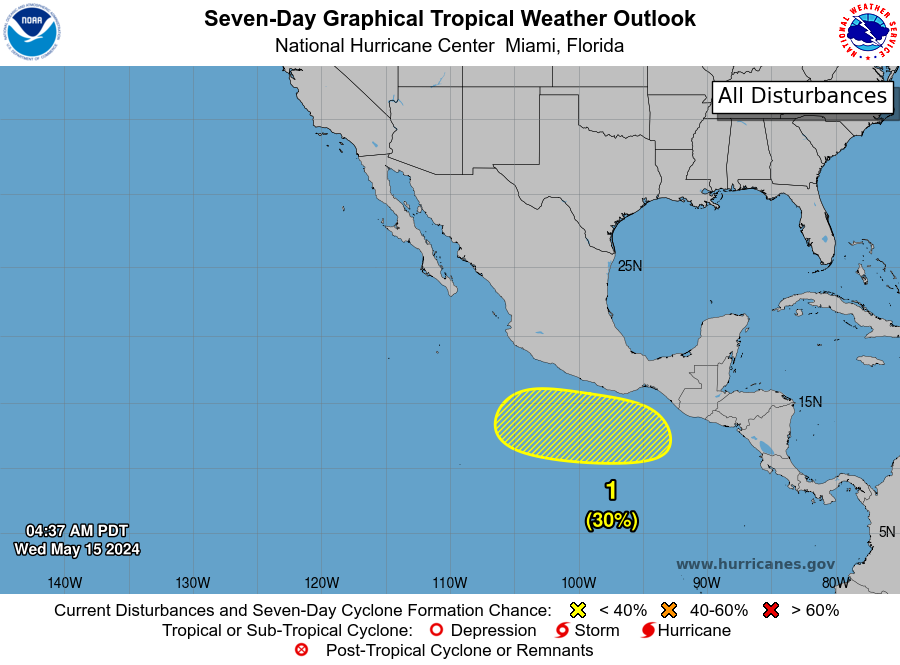Headlines
- No tropical activity expected this week
- A disturbance may form in the southern Caribbean next week, but it will likely head due north or northeast out to sea quickly.
- Water temperatures are rapidly warming in the Gulf of Mexico.
Quiet for the next week or so
The good news is that as hurricane season officially kicks off this week, we have nothing of note out there to discuss. The only thing catching my eye right now is the potential for a disturbance in the southern Caribbean sometime next week that may lift northward or off to the northeast into the Atlantic, quickly lifting out to sea. For now, that seems like an inconsequential item, so we’ll end our discussion there.
The Eastern Pacific seems relatively muted for the next several days as well. So, we’ll close the month of May on a positive note.
Our next big seasonal forecast update will come on June 11th from the researchers at Colorado State. I doubt anything will significantly change.
Gulf of Mexico rapidly warming
About three or four weeks ago, Gulf of Mexico water temperatures were running just a smidge above average. Even compared to a year prior, they were actually not too bad. As is often the case in May, things can change quickly in the Gulf, and indeed they have. We started May with water temps running about a week or less ahead of schedule. We have accelerated that pace and are now running two to three weeks ahead of normal, per analysis from the University of Arizona.
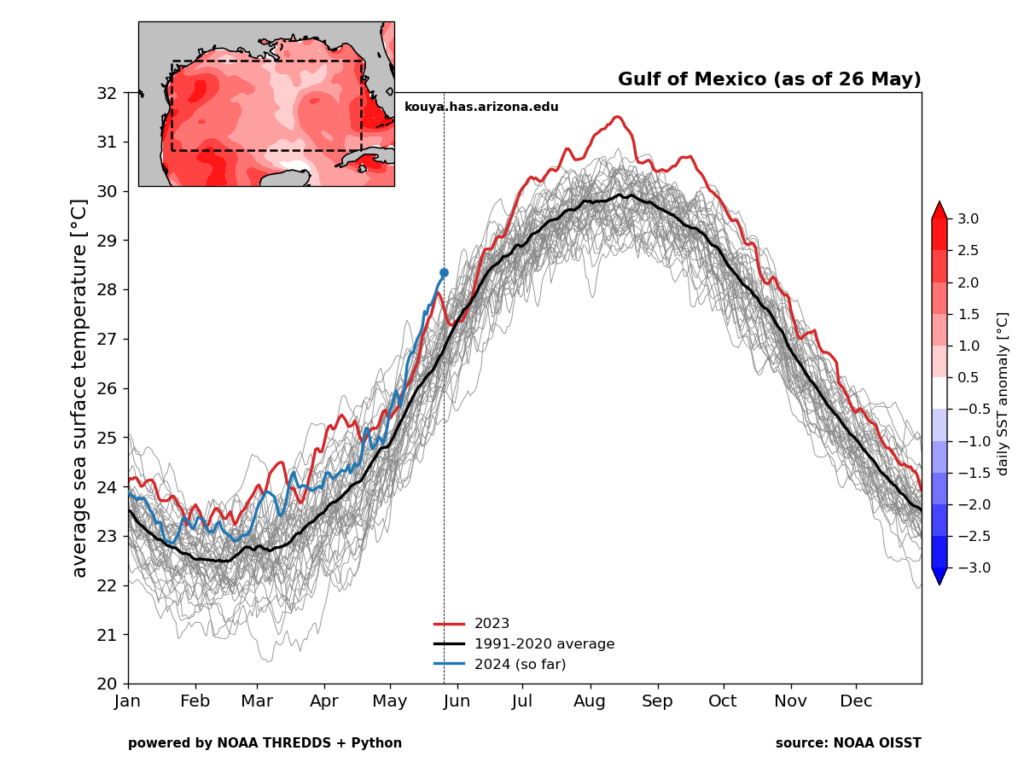
Not only have they accelerated this month, those water temperatures are currently at record levels for the time of year. You can see from the map inset above that the western Gulf and Florida coast is running about 2 to 3°C above normal, while the central Gulf is running about 0.5 to 1°C above normal. Gulf water temps can fluctuate rapidly, and even over the last week or so, we’ve seen temps in the western Gulf slow down their rise or even backpedal a bit, while the central Gulf sees some faster warming. While this is probably best described as concerning, it’s also somewhat typical Gulf behavior — just occurring at record levels of warmth. Wherein lies the problem for the 2024 hurricane season.
Another reminder to prepare for hurricane season, as you should every year.
